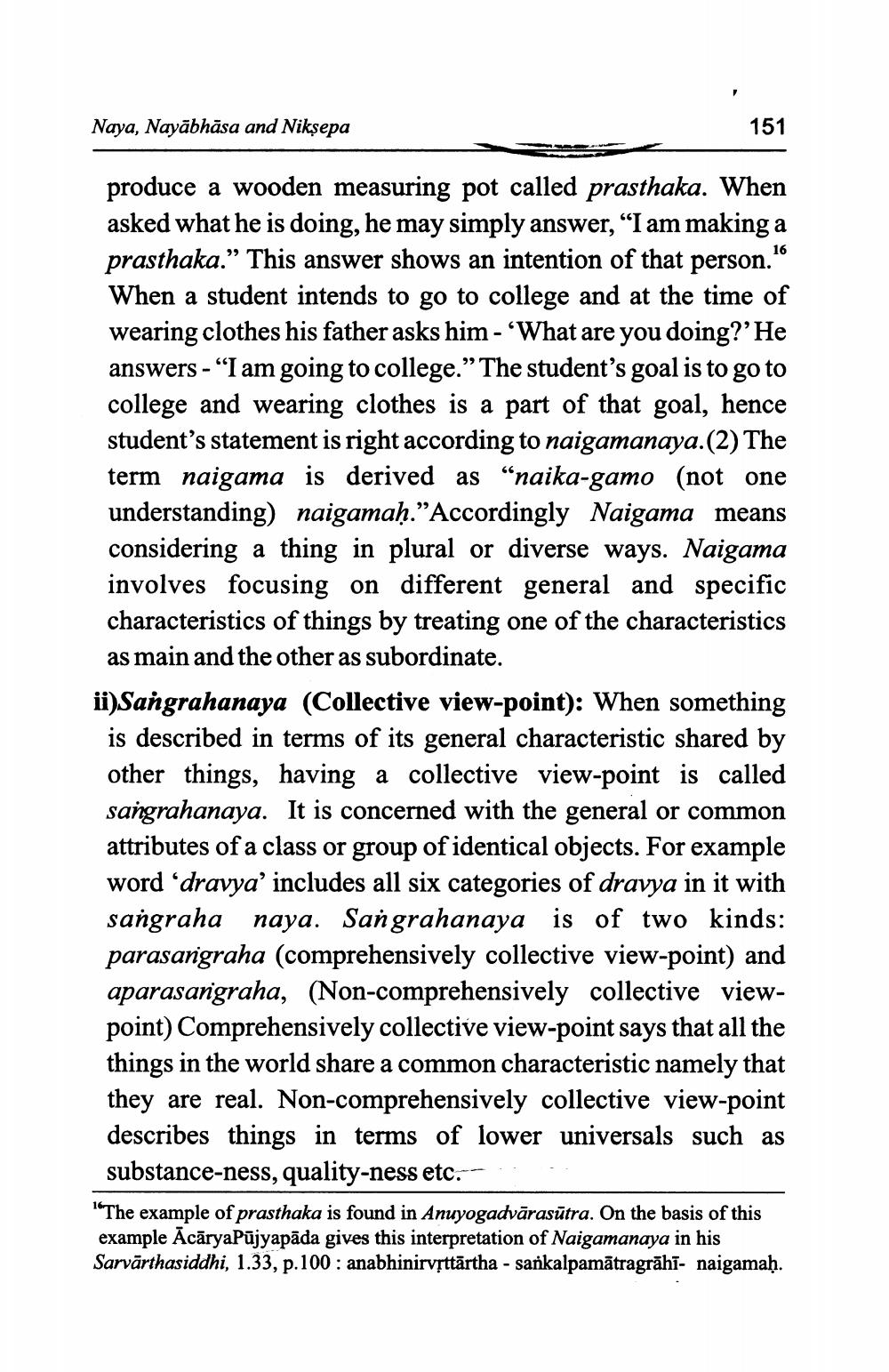________________
Naya, Nayābhāsa and Niksepa
151
produce a wooden measuring pot called prasthaka. When asked what he is doing, he may simply answer, “I am making a prasthaka.” This answer shows an intention of that person." When a student intends to go to college and at the time of wearing clothes his father asks him - 'What are you doing?' He answers - "I am going to college.” The student's goal is to go to college and wearing clothes is a part of that goal, hence student's statement is right according to naigamanaya.(2) The term naigama is derived as “naika-gamo (not one understanding) naigamaḥ.”Accordingly Naigama means considering a thing in plural or diverse ways. Naigama involves focusing on different general and specific characteristics of things by treating one of the characteristics as main and the other as subordinate. ii)Sangrahanaya (Collective view-point): When something is described in terms of its general characteristic shared by other things, having a collective view-point is called sangrahanaya. It is concerned with the general or common attributes of a class or group of identical objects. For example word 'dravya' includes all six categories of dravya in it with sangraha naya. Sangrahanaya is of two kinds: parasangraha (comprehensively collective view-point) and aparasangraha, (Non-comprehensively collective viewpoint) Comprehensively collective view-point says that all the things in the world share a common characteristic namely that they are real. Non-comprehensively collective view-point describes things in terms of lower universals such as
substance-ness, quality-ness etc. "The example of prasthaka is found in Anuyogadvārasūtra. On the basis of this example ĀcāryaPūjyapāda gives this interpretation of Naigamanaya in his Sarvārthasiddhi, 1.33, p. 100: anabhinirvíttārtha - sankalpamātragrāhī- naigamaḥ.




